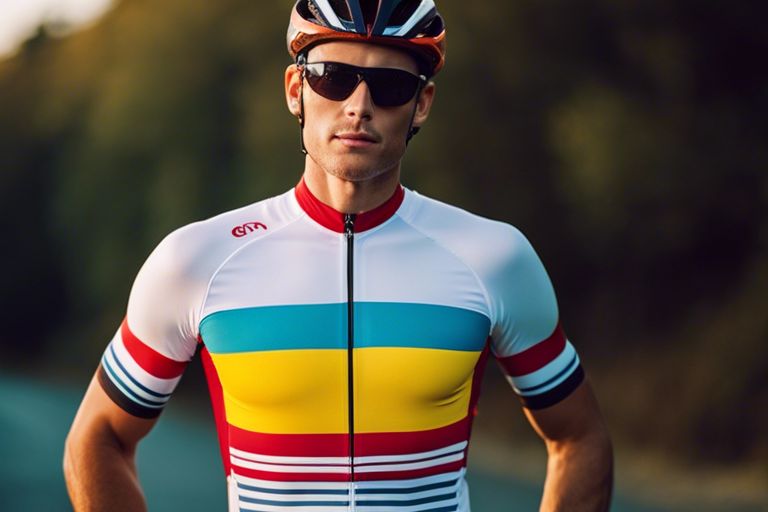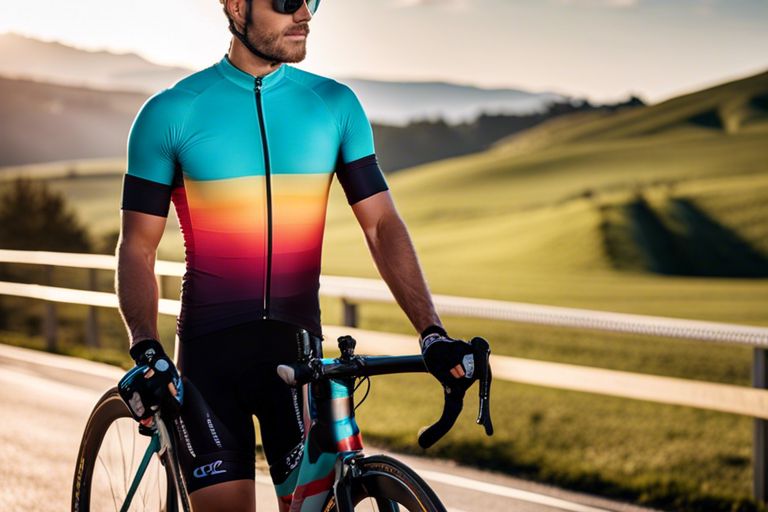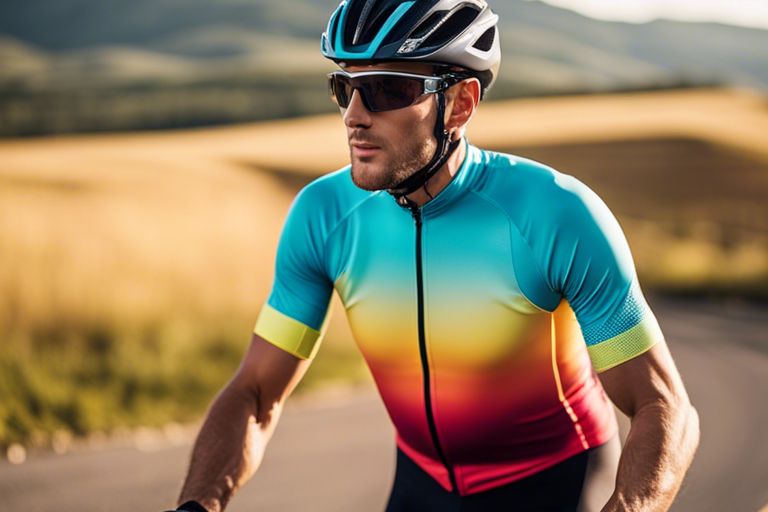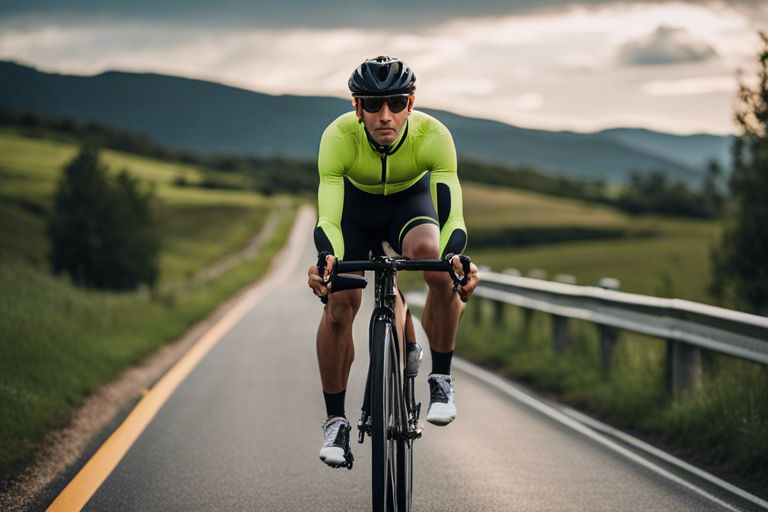#Jerseys Whether you’re a seasoned cyclist or just getting into the sport, the length of cycling jerseys is a common question that arises. Cycling jerseys are designed with specific features to enhance performance and comfort on the bike. One of these considerations is the length of the jersey, which plays a crucial role in how it functions during your rides. In this blog post, we will explore the topic of whether cycling jerseys are supposed to be short, exploring the reasons behind the different lengths available and how to choose the right one for your riding style.

Key Takeaways:
- Cycling jerseys are supposed to be short in the front to prevent bunching up while in the riding position.
- The longer back panel of cycling jerseys keeps your lower back covered while you are leaning forward on the bike handlebars.
- Shorter front, longer back design of cycling jerseys ensures comfort and functionality while cycling for long hours.

Understanding Cycling Jersey Design
Functionality of Cycling Jerseys
While cycling jerseys may appear to be short, their design is based on functionality. The shorter front of the jersey allows for a more aerodynamic fit while riding, reducing wind resistance and enhancing performance. Additionally, the shorter length prevents the fabric from bunching up when in a bent-over cycling position, ensuring a comfortable and unrestricted range of motion.
Aesthetics and Tradition in Cycling Apparel
The aesthetics of cycling jerseys are deeply rooted in tradition and serve both practical and symbolic purposes. The bright colors and bold designs not only enhance visibility on the road but also reflect the rich history and heritage of cycling culture. Brands often incorporate elements such as team logos, sponsor emblems, and national flags to pay homage to the sport’s iconic imagery.
Plus, the tight fit of cycling jerseys is intentional, as it helps reduce drag and improve aerodynamics. The back of the jersey is elongated to provide full coverage when in a seated position on the bike, ensuring comfort and protection while riding. Ultimately, the design of cycling jerseys is a careful balance of form and function, combining performance-enhancing features with a nod to tradition and style.
The Fit and Length of Cycling Jerseys
How Cycling Jerseys Should Fit
Any well-designed cycling jersey should fit snugly to your body without being too constricting. The fabric should be close to the skin to reduce wind resistance and prevent flapping. It’s imperative to ensure that the jersey doesn’t bunch up or sag in specific areas while riding to maintain comfort and performance.
Reasons Behind the Shorter Cut
Any cycling jersey is designed to have a shorter cut in the front for a specific reason. The shorter front hem prevents bunching up when you’re leaning forward on the bike. This design element ensures that the jersey stays in place and maintains its aerodynamic properties, ultimately enhancing your cycling experience.
To maintain a sleek and performance-oriented design, cycling jerseys are tailored with a shorter cut in the front. This specific feature helps in reducing drag and ensuring a proper fit while riding, allowing cyclists to focus on their performance without being distracted by the jersey riding up or flapping in the wind.
The Benefits of Proper Jersey Length
Aerodynamics and Performance
On the cycling track, every second counts. The length of your cycling jersey can significantly impact your aerodynamics and overall performance. A properly fitting jersey that is not too long reduces wind resistance, allowing you to cut through the air more efficiently. This means less energy wasted fighting the wind and more power available for your pedal strokes, ultimately improving your speed and performance on the bike.
Comfort and Mobility on the Bike
With a properly fitted jersey that is the right length, you can experience enhanced comfort and mobility during your ride. A jersey that is too long can bunch up around your waist or ride up your back, causing discomfort and distraction. On the other hand, a jersey that is too short may expose your lower back to the elements or lead to chafing from constant rubbing against your shorts. Finding the ideal jersey length ensures that you can move freely on the bike without any distractions, allowing you to focus on your ride and performance.
Jersey length is a crucial factor in ensuring your comfort and performance on the bike. When opting for a cycling jersey, pay attention to the length and choose one that fits you properly. A jersey that is neither too long nor too short will not only enhance your aerodynamics and performance but also provide the comfort and mobility you need for a successful ride.

Choosing the Right Cycling Jersey
Factors to Consider When Purchasing
When choosing a cycling jersey, there are several factors to consider to ensure you get the right fit and style. Factors to consider include the material of the jersey, the length of the sleeves, and the overall fit. Make sure the material is breathable and moisture-wicking to keep you comfortable on long rides. Sleeve length can vary from short to long sleeves, depending on personal preference and the climate you will be riding in. Lastly, the fit should be snug but not too tight, allowing for freedom of movement while riding.
- Check the material for breathability and moisture-wicking properties.
- Consider the length of the sleeves based on personal preference and climate.
- Choose a fit that is snug without being restrictive.
- Thou must ensure the jersey allows for a full range of motion while biking.
Tips for Trying on Cycling Jerseys
Trying on a cycling jersey before purchasing is crucial to ensure a proper fit and comfort while riding. When trying on a jersey, make sure to test the range of motion by mimicking cycling movements. Check the length of the jersey to ensure it covers your back while in a cycling position. Assume that the jersey may feel slightly tighter in a riding position than when standing.
- Move around in the jersey to ensure it doesn’t restrict your movements while riding.
- Check the length of the jersey to ensure full coverage of your back while cycling.
- Assume that the jersey may feel slightly tighter in a riding position than when standing.
Summing up
Taking this into account, cycling jerseys are indeed supposed to be short in order to provide comfort and functionality to the rider. The aerodynamic design and moisture-wicking fabric of these jerseys help enhance performance and provide a more efficient cycling experience. Therefore, cyclists should opt for shorter jerseys to optimize their performance on the road.
FAQ
Q: Are cycling jerseys supposed to be short?
A: Yes, cycling jerseys are designed to be short in the front and longer in the back. This specific cut is known as a “drop tail” design, which helps provide better coverage and comfort while riding.
Q: Why are cycling jerseys short in the front?
A: Cycling jerseys are short in the front to prevent any excess fabric from bunching up while in a forward riding position. This design ensures a snug fit to reduce drag and enhance aerodynamics during cycling activities.
Q: What are the benefits of wearing a properly fitting cycling jersey?
A: Wearing a properly fitting cycling jersey can improve your overall performance and comfort while riding. The snug fit reduces wind resistance, the moisture-wicking fabric helps regulate body temperature, and the rear pockets provide convenient storage for necessarys like nutrition and tools.




